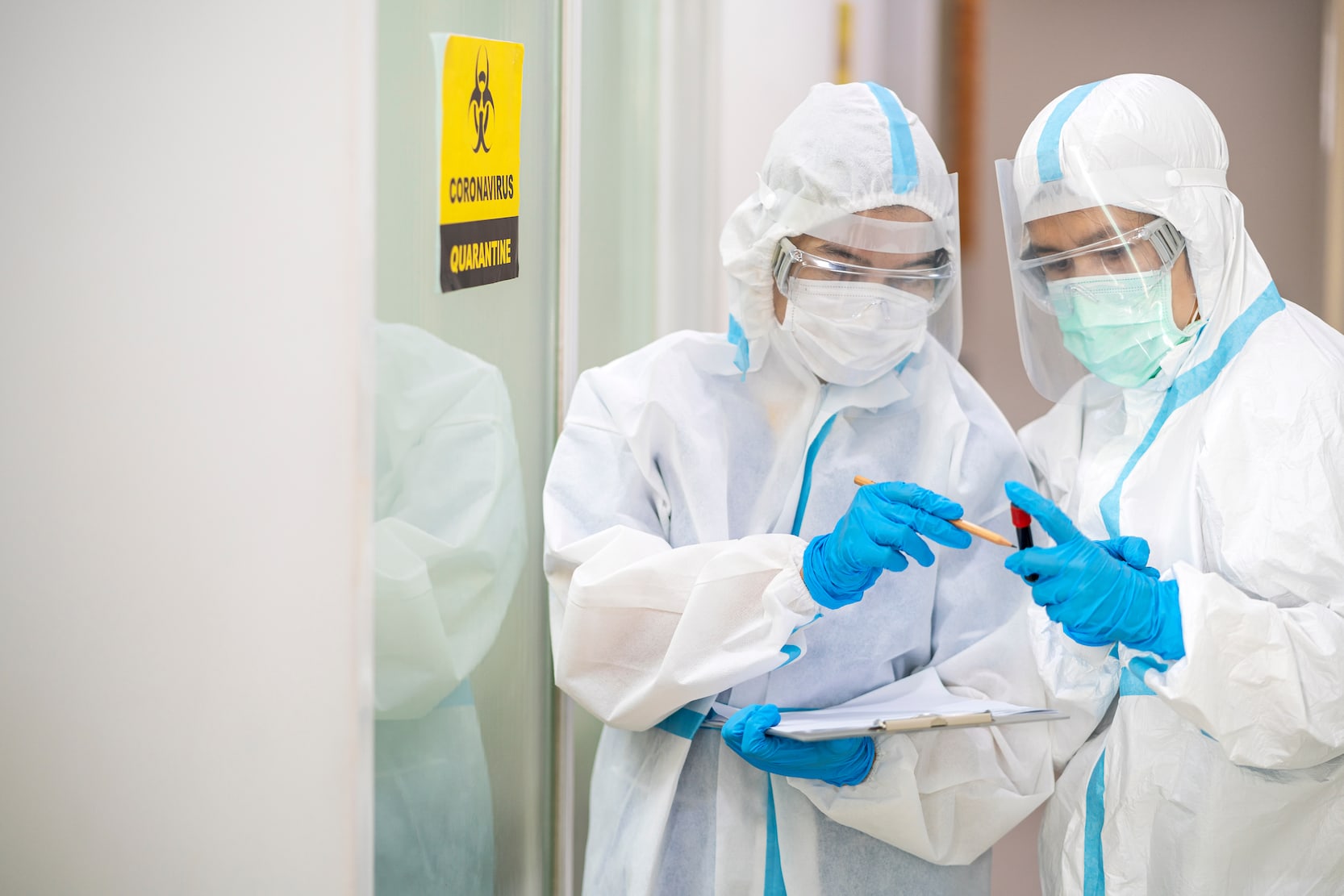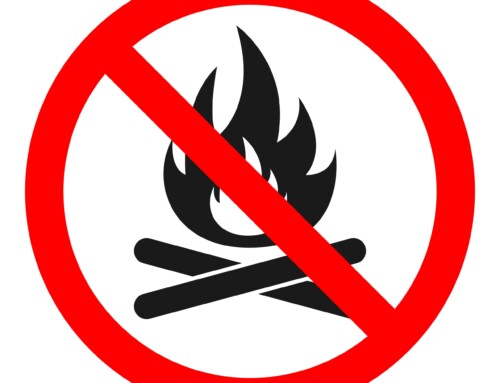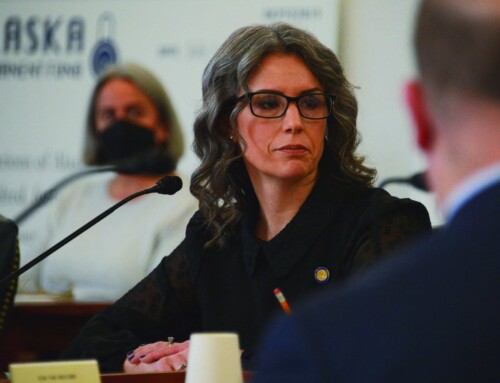An Alaskan emergency room physician shares the reality of treating COVID-19 in hospitals around the state as the delta varient rages through the unvaccinated
The Alaska Landmine reached out to an emergency room doctor at an Alaska hospital to solicit an unvarnished report of current conditions in the hospital. The piece is published anonymously because the individual is not authorized to speak to the press.
“You need to tell people how terrible this is,” a patient pleaded with me as we placed him on oxygen support, “this isn’t the flu. This is the worst I have felt in my life.”
I am exhausted, but I am still trying.
I am an Alaskan emergency room doctor. Every patient I saw in the first four hours of my last shift had COVID. Every. Single. Patient. Our hospitals are overflowing even as frontline healthcare workers are reaching their breaking points and walking away. As the delta variant tsunami continues to flood the state, our ability to care for all of our patients is jeopardized.
My colleagues and I have been trying to communicate how devastating this virus can be. Public health departments have been trying. I am not a Democrat. I am not a Republican. I have voted for members of both parties. My goal is not to make a political statement, but to let you know what it is currently like inside of an Alaska emergency room (ER).
Last winter our ERs were stressed by the influx of COVID patients. This surge is much worse. The patients coming to the ER over the past two months are often sicker and younger than before. The delta variant comprised 96% of COVID strains sequenced in July and August in Alaska. With the new variant we are seeing more people without underlying medical problems who are sick and seeking help. This week we had a 20-year-old die of COVID in this state. We see young patients without risk factors react to the virus with heart attacks, strokes, lung scarring and other life-altering side effects.
Our COVID patients are confused, hallucinating and exhausted. After eight days of symptoms, one patient told me that she “could not keep living like this.”
Workdays seem like revolving doors of COVID patients with long waits. People are angry and upset with the long waits, but patients keep arriving. One patient showed up multiple days in a row with tears in her eyes hoping for a new drug or miracle cure. Unfortunately, that drug does not exist. Others are shocked as their symptoms carry on for weeks. After COVID infections, some formerly healthy patients can no longer walk across the room without oxygen, much less go on a hike. Every one of my shifts now includes another heart-wrenching story.
We medical workers are exhausted. ERs already struggling with the typical summer onslaught of accidental injuries, strokes, heart attacks and other medical emergencies are inundated with sicker and sicker COVID patients. Over the past two weeks multiple hospitals across Anchorage have been on surge capacity. This means that they don’t have room to take care of patients who may come in the front door with appendicitis, broken bones or other illnesses. Many patients are staying in the emergency department for multiple days waiting for an inpatient bed.
Hospital resources are becoming scarce. Healthcare is not infinite. There are limited beds, limited staff and limited drugs. Patients with medical emergencies are being examined in the hallways or waiting multiple hours in waiting rooms. Rural facilities without certain specialty care that is only available in Anchorage have attempted to transfer patients here, only to be told to call Seattle. Now those hospitals are filling close to capacity as well.
There are fewer and fewer staff to take care of patients. Turnover is high in both emergency rooms and intensive care areas across the state. Many hospitals have declared critical staffing shortages with nursing, technicians, social workers and many other patient-care related staff. Skilled staff are leaving the acute care environment for less traumatic and exhausting occupations.
I understand why they leave. It’s hard not want to leave too after listening to a COVID patient say goodbye to his terminally ill wife while I put him on a breathing machine. He strained to hear over the blows of the BiPap as her voice quavered, knowing they may never speak again.
I, too, daydream of working in a less discouraging profession. Although I have no plans to quit, taking care of patients whose pain and deaths are preventable is still heartbreaking.
The arrival of the COVID vaccines in early 2021 brought a great deal of hope to Alaska’s medical community. Their efficacy in preventing hospitalizations and death is astounding. Emphasis on ‘prevent.’ COVID has few treatment options and no cures. All we can do is help the body try to fight and survive the infection. After Alaska’s vaccine distribution kicked into gear over spring, case counts dropped. Hospitals disbanded COVID units and there were days where local hospitals didn’t admit a single new COVID patient.
Almost all of our cases coming to the emergency room now involve unvaccinated individuals. Per the State of Alaska Department of Health and Social Services, as of Aug. 9, 94% of COVID hospitalizations and 96% of the COVID deaths since Jan. 1, 2021 are in not-fully-vaccinated individuals. The difference between the experiences of vaccinated and unvaccinated people is often stark. A couple comes in: one vaccinated the other not. The unvaccinated spouse is coughing, vomiting and needing help. The vaccinated person is the asymptomatic caretaker.
I have treated patients who came to the ER sick with COVID who then ask if they can get the vaccine. The answer is that if you are already infected with COVID, the vaccine will not cure your current illness. It’s too late. However, if you are not infected with COVID and unvaccinated, immunizations are still available. There are free vaccination clinics set up across the state.
Are you okay with not having a bed? Are you willing to sit in your car for hours and wait to be treated? Are you prepared to watch your loved one be taken out of state so they can be admitted for medical treatment?
This is the current reality at hospitals in Alaska.
Note from the SN editors: This piece was originally published in The Alaska Land Mine. While The Skagway News does not normally publish anonymous work, we believe it is the best interest of the community and state to share this doctor’s message.







Leave A Comment